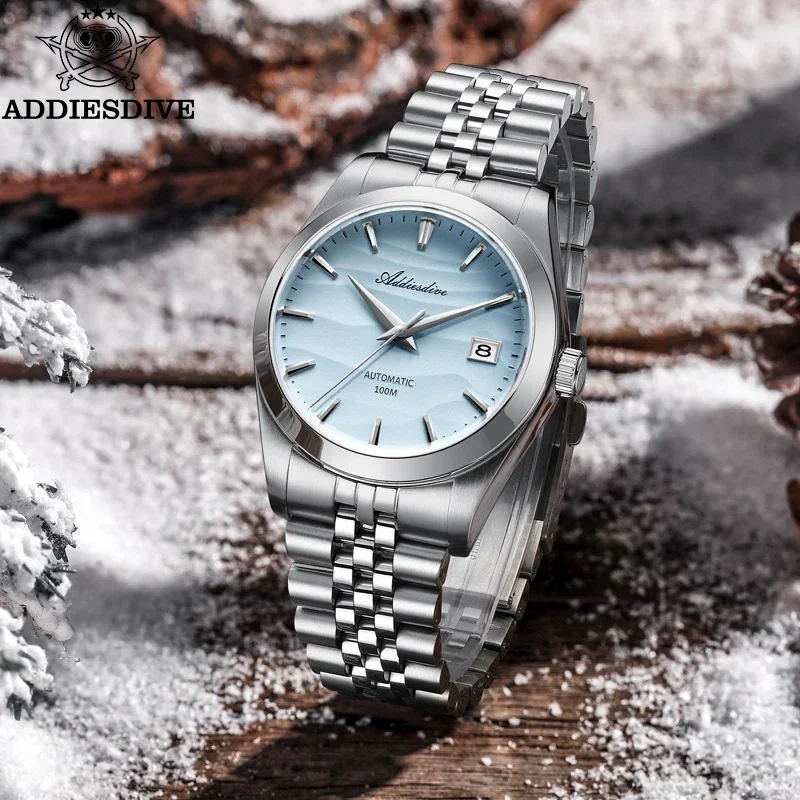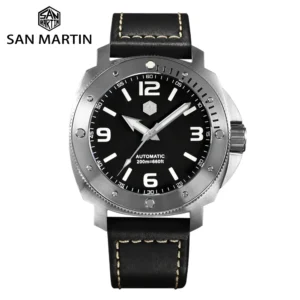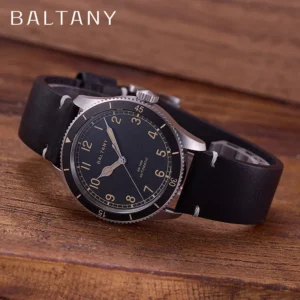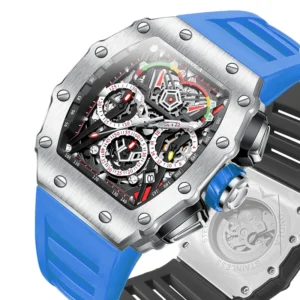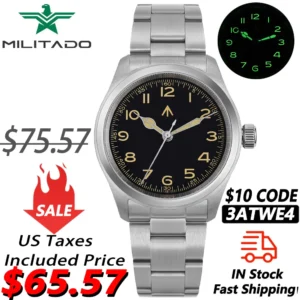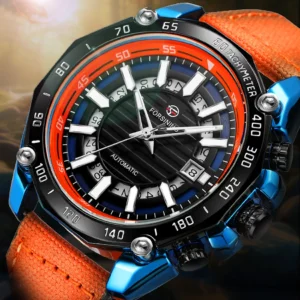Introduction: The Military Watch Dilemma – Performance Beyond the Battlefield
When military personnel ask, “Are automatic watches good for military use?” the answer isn’t straightforward. The suitability of these self-winding mechanical timepieces depends on specific military roles, operational environments, and individual preferences.
Mechanical watches have a rich history in military applications. Before the quartz revolution, mechanical timepieces were standard issue for military forces worldwide, helping coordinate operations from trench warfare to naval engagements. These watches were valued tools, not just accessories.
Today’s military watch must meet stringent demands across various criteria:
– Durability in harsh conditions
– Reliable timekeeping when it matters most
– Functional utility in diverse environments
– Practical features for operational use
While automatic watches were once the only option for military personnel, today’s service members face a more complex choice. Modern alternatives present compelling competition, but automatics retain distinct advantages worth considering. The evolution of military field watches shows how these timepieces have adapted to changing battlefield requirements while maintaining core functionality.
This analysis will examine how automatic watches measure up against these demands, exploring both their strengths and limitations for military applications.
Essential Qualities of an Effective Military Timepiece
Before evaluating automatic watches specifically, we need to understand what makes any watch suitable for military use. Military timepieces must embody specific characteristics regardless of their movement type.
Key requirements include:
- Durability: The ability to withstand impacts, vibrations, and environmental extremes without failure
- Reliability: Consistent performance under all conditions without requiring frequent attention
- Readability: Clear visibility in all lighting conditions, including complete darkness
- Water Resistance: Protection from moisture, rain, and submersion (minimum 100m/330ft for field operations)
- Shock Resistance: Ability to handle impacts without affecting timekeeping
- Anti-Reflective Properties: Elimination of glare that could compromise tactical positions
- Functional Simplicity: Straightforward operation under stress
These qualities aren’t just preferences but necessities. In combat situations, a watch failure could compromise mission timing, endanger personnel, or disrupt coordinated operations. Understanding the complete history of field watches in military contexts reveals how these requirements developed through battlefield experiences.
For troops requiring purpose-built timepieces, our automatic field military watches collection offers options specifically designed to meet these rigorous standards.
The Inherent Advantages of Automatic Watches for Military Personnel
Automatic watches offer several unique benefits that make them appealing for military applications:
Battery Independence
Perhaps the most significant advantage is freedom from batteries. In extended deployments or remote locations where resupply is difficult, an automatic watch continues functioning indefinitely with regular wear. This self-sufficiency eliminates a potential point of failure that affects quartz watches.
EMP Resistance
Automatic watches contain minimal electronic components, making them naturally resistant to electromagnetic pulses (EMPs). In scenarios involving EMP weapons or solar events, mechanical watches would continue operating while electronic devices fail.
Operational Security
With no electronic emissions or digital signature, automatic watches present no risk of electronic detection or data compromise. This security aspect remains relevant for specialized operations where electronic emissions must be minimized.
Mechanical Durability
High-quality automatic movements can continue functioning even in extreme temperature ranges that might affect battery performance in quartz watches. Field-tested automatic watch designs have proven their ability to handle challenging environmental conditions while maintaining functionality.
Heritage and Psychological Factors
There’s also an intangible benefit to the connection with military tradition. Many service members appreciate wearing a type of watch that links them to generations of warriors before them, providing psychological comfort and confidence.
For those seeking watches with tactical capabilities, our tactical automatic watches provide specialized features designed for military operations while maintaining the advantages of self-winding movements.
Critical Limitations of Automatic Watches in Combat Environments
Despite their advantages, automatic watches have several limitations that can affect their military suitability:
Shock Vulnerability
While modern automatic watches incorporate shock protection systems, the complex mechanical components remain more vulnerable to extreme impacts than quartz movements. Heavy recoil, explosions, or hard impacts can potentially damage the delicate balance wheel and escapement.
Magnetic Sensitivity
Military environments often contain equipment generating magnetic fields that can severely affect mechanical watch accuracy. While some high-end models feature antimagnetic protection, most standard automatic watches remain susceptible to magnetism.
Accuracy Variations
Even the finest automatic movements typically deviate by -4/+6 seconds daily under optimal conditions. This variation can increase with position changes, temperature fluctuations, and activity levels—potentially accumulating timing errors during extended operations.
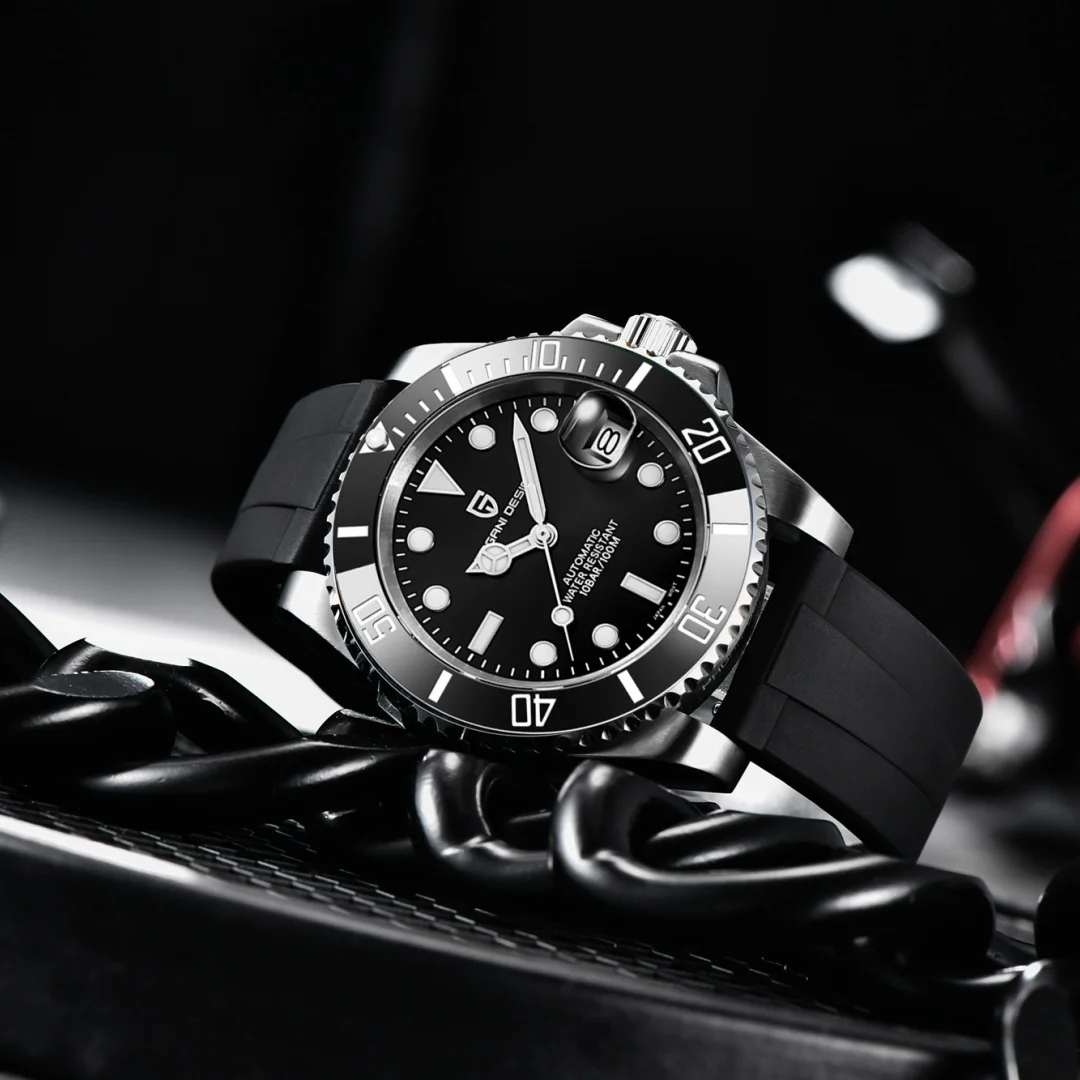
Power Reserve Considerations
Automatic watches typically offer 38-42 hours of power reserve when not worn. For personnel with irregular wearing patterns or rotating shift duties, this may necessitate manual winding or watch winders to maintain continuous operation.
Maintenance Requirements
Mechanical movements require periodic servicing (typically every 3-5 years) to maintain optimal performance. In deployment settings, access to qualified watchmakers for service or repairs may be limited or impossible.
Weight Factor
Quality automatic watches tend to be heavier than their quartz counterparts, adding to the already substantial load carried by military personnel. This additional weight, while seemingly minor, can become noticeable during extended operations.
Direct Comparison: Automatic vs. Quartz Movements for Military Applications
To clearly understand the practical differences, let’s directly compare automatic and quartz watches across key performance metrics relevant to military use:
| Factor | Automatic Watches | Quartz Watches |
|---|---|---|
| Accuracy | ±5-15 seconds per day | ±15-30 seconds per month |
| Power Source | Kinetic energy from movement | Battery (1-5 year lifespan) |
| Shock Resistance | Moderate (movement dependent) | High |
| Temperature Tolerance | Wide range but affects accuracy | Wide range with minimal effect |
| EMP Vulnerability | Low | High |
| Maintenance | Service every 3-5 years | Battery change every 1-5 years |
| Weight | Typically heavier | Typically lighter |
| Cost | Higher initial cost | Lower initial cost |
This comparison helps explain why most modern military-issued watches use quartz movements. The superior accuracy, shock resistance, and lower maintenance requirements generally outweigh the battery dependency issue for standard operations. The field watch functionality in combat zones relies heavily on these practical considerations rather than the mechanical sophistication that collectors might value.
Beyond Automatic vs. Quartz: Modern Military Timekeeping Alternatives
Today’s military personnel have options beyond the traditional automatic vs. quartz debate:
Solar-Powered Watches
These watches combine quartz accuracy with extended power independence. By harvesting light energy, they can operate for months without needing battery replacement, addressing the main disadvantage of standard quartz watches.
GPS Watches
For specialized roles, GPS-equipped watches offer precise location data and atomic-clock accuracy. They automatically adjust to different time zones—valuable for deployed forces operating across multiple regions.
ABC Watches (Altimeter, Barometer, Compass)
These tactical timepieces provide environmental data useful for navigation, weather prediction, and mission planning. Modern versions often include solar power for extended operation.
Tactical Digital Watches
Purpose-built for military use, these watches often feature night vision compatibility, stealth modes, and specialized timing functions specific to military operations. Many incorporate multiple power sources for redundancy.
Understanding the ultimate guide to tactical features in automatic wristwatches can help military personnel determine if mechanical watches can meet their specific operational requirements despite these compelling alternatives.
Military Perspectives: What Service Members Actually Wear
Conversations with active and veteran military personnel reveal interesting patterns in real-world watch preferences:
Many service members maintain a “rotation” of watches for different situations. A tough, inexpensive quartz watch might be preferred for training and field operations, while an automatic watch might be reserved for garrison duty or special occasions.
Special operations forces often have more flexibility in their equipment choices. Some operators prefer high-end automatic watches for their reliability in remote areas, while others opt for advanced tactical quartz models with specialized features.
Naval personnel, particularly divers, sometimes favor automatic dive watches for their pressure resistance and independence from batteries during extended underwater operations.
Aviation personnel typically prioritize chronograph functionality and multiple time zone tracking, which can be found in both automatic and quartz options within our military-inspired automatic watches collection.
A consistent theme emerges: personal preference plays a significant role, but most military personnel prioritize functionality appropriate to their specific duties over watchmaking tradition or collecting considerations.
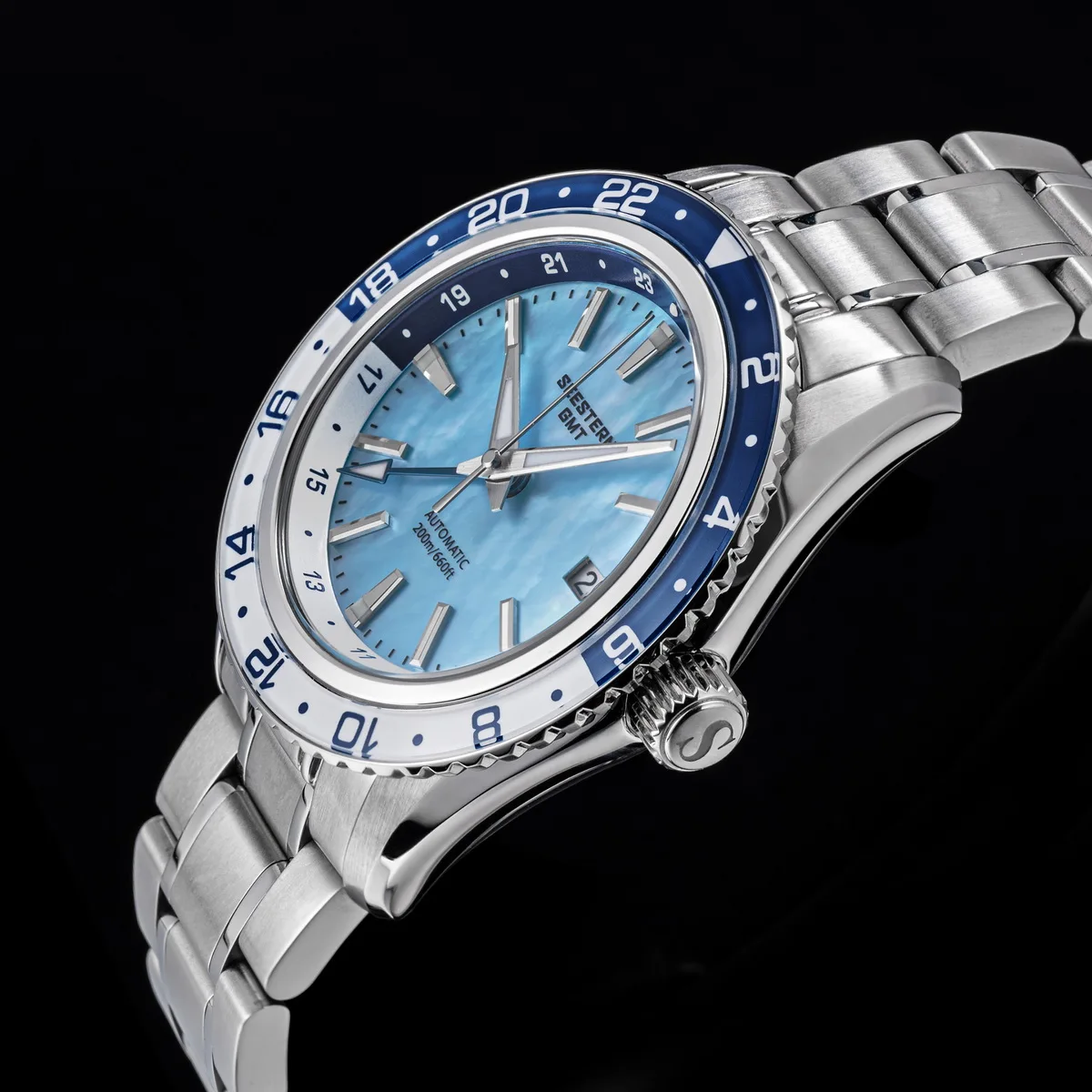
Selecting an Automatic Watch for Military Use: Critical Specifications
If you’re considering an automatic watch for military use, focus on these critical specifications:
Movement Quality
Seek movements with proven reliability records and shock resistance. Swiss and Japanese movements from established manufacturers typically offer the best balance of performance and serviceability.
Case Construction
Look for 316L stainless steel or titanium cases with screwed-down crowns and casebacks. Titanium offers superior strength-to-weight ratio but comes at a premium price.
Water Resistance
Minimum 100m/330ft for general military use. For maritime operations, 200m/660ft or greater is recommended. Ensure gaskets are regularly inspected and maintained.
Crystal Material
Sapphire crystal offers superior scratch resistance compared to mineral glass, though it can be more brittle under extreme impact. Some tactical watches use slightly more flexible sapphire blends to balance hardness with impact resistance.
Dial Design
High contrast between hands and dial with generous luminous material application ensures readability in all conditions. The best military watches use Super-LumiNova or similar compounds that don’t require “charging” with light sources.
Strap Options
NATO-style nylon straps provide security with their redundant attachment points. Quick-release spring bars allow fast strap changes in the field. Consider having multiple strap options for different environments.
Military Inspired Automatic Watches, Rugged Automatic Watches, Tactical Automatic Watches
Price range: $852.14 through $994.60 Select options This product has multiple variants. The options may be chosen on the product pageBronze Automatic Watches, Military Inspired Automatic Watches, Professional Spec Dive Watches
Price range: $1,442.21 through $1,442.82 Select options This product has multiple variants. The options may be chosen on the product pageClassic Pilot Watches, Military Inspired Automatic Watches
$561.00 Select options This product has multiple variants. The options may be chosen on the product pageRugged Automatic Watches, Unique Automatic Watches
Price range: $228.96 through $231.10 Select options This product has multiple variants. The options may be chosen on the product pageClassic Field Watches, Military Inspired Automatic Watches
Price range: $280.87 through $338.51 Select options This product has multiple variants. The options may be chosen on the product pageAutomatic Skeleton Watches, Military Inspired Automatic Watches, Unique Automatic Watches
$191.88 Select options This product has multiple variants. The options may be chosen on the product page
The evolution of military watch styles through decades shows that certain design elements have remained consistent due to their proven utility. Our rugged automatic watches collection incorporates these time-tested features while adding modern materials and manufacturing techniques.
Conclusion: The Verdict on Automatic Watches in Military Service
Are automatic watches good for military use? The answer depends on specific circumstances, roles, and preferences.
Automatic watches excel in situations requiring:
– Extended independence from power sources
– Operation in EMP-sensitive environments
– Maximum operational security
– Long-term sustainability in remote locations
However, they may fall short when:
– Split-second accuracy is mission-critical
– Extreme impacts are frequent
– Maintenance resources are unavailable
– Weight considerations are paramount
For general military use, modern quartz or solar-powered watches typically offer the best balance of accuracy, durability, and maintenance requirements. However, a quality automatic watch from our classic field watches collection can certainly serve effectively, particularly in roles where battery dependency presents a greater liability than mechanical complexity.
The ideal choice ultimately depends on specific duty requirements, personal preferences, and the particular conditions of service. Many military personnel find that having both automatic and quartz options available provides the best operational flexibility.
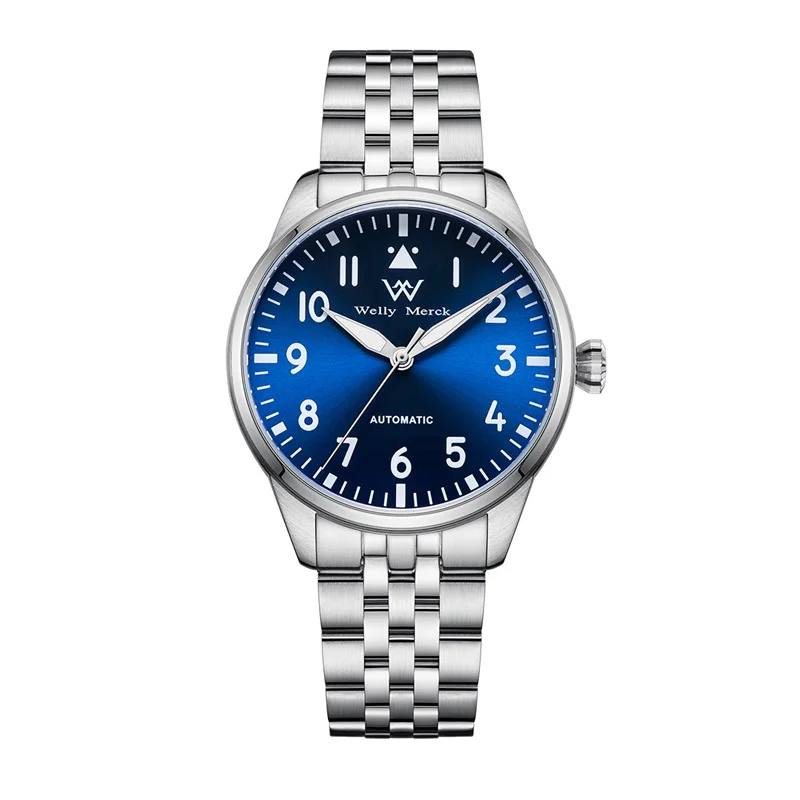
Supplement: Maintaining Your Automatic Watch During Military Service
Q: How can I protect my automatic watch during high-impact activities?
A: Remove your watch during activities involving sustained heavy impacts or vibrations. For unavoidable impacts, watches with shock protection systems (like Incabloc or Diashock) offer better durability. Consider how long automatic watches last under different conditions when planning your maintenance schedule.
Q: What basic maintenance can I perform in the field?
A: Regularly rinse with fresh water after exposure to salt water or mud. Ensure the crown is fully secured. Maintain the power reserve by wearing the watch consistently or manually winding it every 1-2 days when not worn.
Q: How do I know when my watch needs professional service?
A: Watch for significant accuracy changes (gaining/losing minutes per day), moisture inside the case, or resistance when operating the crown. These indicate the need for professional inspection as soon as practical.
Q: How should I store my automatic watch during non-wear periods?
A: Store it in a dry place away from extreme temperatures. If storage will exceed the power reserve duration, allow the watch to stop naturally—this reduces wear on components compared to running continuously.
Supplement: Is Watch Choice Regulated in Military Branches?
Q: Do military branches have official regulations about watches?
A: Most branches specify that watches should be conservative in design and color for dress uniforms, typically favoring black, brown, or metal bands with subdued dials. For combat uniforms, regulations generally focus on functionality rather than specific movement types.
Q: Are there unwritten standards about watch choices?
A: While not officially regulated, there are conventions within different units. Special operations groups typically have more flexibility, while traditional units may maintain stronger informal standards about appropriate timepieces.
Q: How do regulations differ between formal and field environments?
A: Dress uniform regulations are more restrictive, focusing on appearance and conformity. Field environments prioritize functionality, with greater tolerance for specialized equipment that meets operational needs.
Q: Are there exceptions for special roles?
A: Yes, certain specialties have specific needs that may override general guidelines. Aviation, diving, and special operations roles often have unique requirements or allowances for specialized timekeeping equipment.

